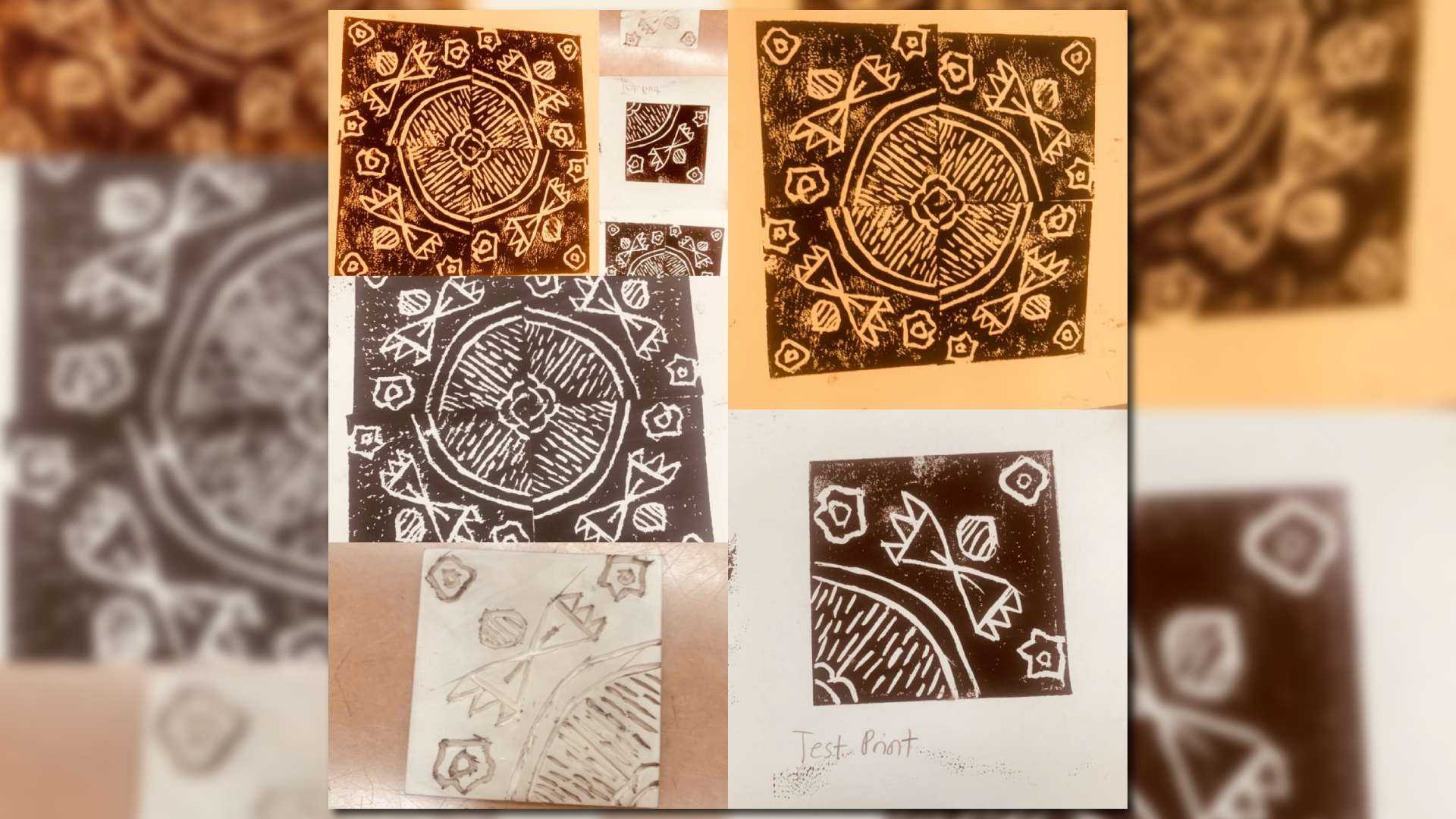BY KAHA G. – 14 YEARS OLD
Before you read this piece, I would like to let you know that the writer is 14 years old and has been writing with the Toronto Caribbean Newspaper for about one year now. What we have learned as a community-centred organization is that we have to tap into the creativity of our young people. They have a lot to offer, and even more to share. I now present to you Unordinary Pairs…” ~ Simone Jennifer Smith
Interconnected lemons with two carrots that are placed to look like a bow; an entire garlic clove above the bow, and flowers on the outside. What I have created are Unordinary Pairs.
My best friends inspire this piece. Despite us being so different, we’ve shared many heart-warming moments that I cherish in my heart. Our differences are what make us closer, and I’m genuinely grateful to have them in my life.
I want to note here that having a friend that’s similar to you isn’t necessarily a terrible thing either.
Now, circling back to my artwork, lemon and garlic seem like an unusual duo, but joining together creates bright and bold flavours in a dish. In that case, the emotion I was hoping to trigger with my work is a sense of acceptance. That’s the reason why I added yellow daisies; it was to act as an aura protecting us, and they symbolize friendship and happiness.
The process was not simple; we had to research our favourite plants, whether they be fruits, flowers, etc. Then choose what design was going on our slate. Personally, step one took up a good portion of my time because I wasn’t set on which design, I should use. Thankfully, my second set of drawings was better than what I started with.
We had to trace our official piece onto the slate, making adjustments along the way. When finally beginning the printing stage, we would have to figure out the correct combination to crack the code of the perfect print. Despite it taking up all of our time, we all persevered and helped each other gain a new perspective on how to get an astounding print, whether it be in the test printing stage or our final product.
The piece had to be based on the Seven Sacred Teachings, and the meanings behind them. I chose: lemon (bravery), garlic (truth), carrots (humility), and flowers (kindness). Considering the elements and principles of art, I used the 2x top on the engraving tool to create little grazing’s to represent the teeny tiny pods of juice inside the lemon. It incorporated texture into my piece.
Additionally, I used shape when creating the carrots, instead of making them detailed; I broke their elements into triangles. So, the three triangles on top of the big triangle would act as the leaves. As for the garlic, I got inspiration from one of the drawings on the board. Since whole garlic cloves look like a wide teardrop, I drew that shape and added curvy lines inside.
My goal as an artist is to make pretty, but meaningful artwork. I want to expand my creativity with my drawings, so I can come up with better and more detailed ways to express myself. I may not be the greatest artist, but I have evolved. It’s surprising how we go from making scribbles, to stick figures; to drawings someone might consider looking at one day. So, yes, this piece has helped me reach my goals.
There are so many times when I was frustrated with not getting the perfect print. At first, I was certain that the problem was my lines, and that I should have made them thicker. I discovered it was the way I was rolling the paint onto the slate, and how much pressure I was applying. After learning new techniques from my peers, I’m happy to say that my final product is something I’m proud of. This whole project made me realize that art takes time, no matter how or what you’re doing it. In the future, whenever I feel stuck or like giving up, I’ll come back to these interconnected masterpieces and remember the lessons learned.

